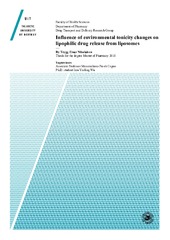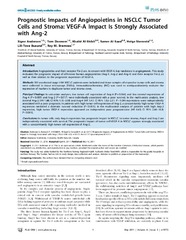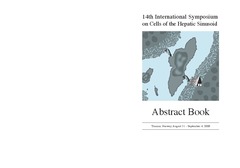Rural GPs’ attitudes toward participating in emergency medicine: a qualitative study
Permanent lenke
https://hdl.handle.net/10037/10244Dato
2016-11-09Type
Journal articleTidsskriftartikkel
Peer reviewed
Sammendrag
Objective: Health authorities want to increase general practitioner (GP) participation in emergency
medicine, but the role of the GP in this context controversial. We explored GPs’ attitudes
toward emergency medicine and call outs.
Design: Thematic analysis of focus group interviews.
Setting: Four rural casualty clinics in Norway.
Participants: GPs with experience ranging from one to 32 years.
Results: The GPs felt that their role had changed from being the only provider of emergency
care to being one of many. In particular, the emergency medical technician teams (EMT) have
evolved and often manage well without a physician. Consequently, the GPs get less experience
and feel more uncertain when encountering emergencies. Nevertheless, the GPs want to participate
in call outs. They believed that their presence contributes to better patient care, and the
community appreciates it. Taking part in call outs is seen as being vital to maintaining skills. The
GPs had difficulties explaining how to decide whether to participate in call outs. Decisions were
perceived as difficult due to insufficient information. The GPs assessed factors, such as distance
from the patient and crowding at the casualty clinic, differently when discussing participation in
call outs.
Conclusion: Although their role may have changed, GPs argue that they still play a part in emergency medicine. The GPs claim that by participating in call outs, they maintain their skills and improve patient care, but further research is needed to help policy makers and clinicians decide when the presence of a GP really counts. Norwegian health authorities want to increase participation by general practitioners (GPs) in emergency medicine, but the role of the GP in this context is controversial.
Beskrivelse
This article is also available via DOI:10.1080/02813432.2016.1249047
Er en del av
Hjortdahl, M. (2018). Norwegian General Practitioners Contribution and Participation in Emergency Medicine. Doctoral thesis. http://hdl.handle.net/10037/14109Forlag
Taylor & Francis OpenSitering
Hjortdahl, M, Halvorsen, P.A. & Risør, M.B. (2016). Rural GPs’ attitudes toward participating in emergency medicine: a qualitative study. Scandinavian Journal of Primary Health Care, 34(4), 377-384. https://doi.org/10.1080/02813432.2016.1249047Metadata
Vis full innførselSamlinger
Relaterte innførsler
Viser innførsler relatert til tittel, forfatter og emneord.
-
Influence of environmental tonicity changes on lipophilic drug release from liposomes
Nikolaisen, Trygg Einar (Mastergradsoppgave; Master thesis, 2018-05-15)Introduction: Liposomes as drug delivery systems has been widely studied as a way to solubilize poorly soluble drugs, reduce side effects of chemotherapeutics and increase circulation time in vivo. Since the first descriptions of liposomes over 60 years ago, they have shown tendencies to shrink and swell when the external environment of the liposomes is altered. This phenomenon has been studied in ... -
Prognostic Impacts of Angiopoietins in NSCLC Tumor Cells and Stroma : VEGF-A Impact Is Strongly Associated with Ang-2
Andersen, Sigve; Dønnem, Tom; Al-Shibli, Khalid Ibrahim; Al-Saad, Samer; Stenvold, Helge; Busund, Lill-Tove; Bremnes, Roy M. (Journal article; Tidsskriftartikkel; Peer reviewed, 2011)Angiopoietins and their receptor Tie-2 are, in concert with VEGF-A, key mediators in angiogenesis. This study evaluates the prognostic impact of all known human angiopoietins (Ang-1, Ang-2 and Ang-4) and their receptor Tie-2, as well as their relation to the prognostic expression of VEGF-A. 335 unselected stage I-IIIA NSCLC-patients were included and tissue samples of respective tumor cells and ... -
14th International Symposium on Cells of the Hepatic Sinusoid
Smedsrød, Bård (Book; Bok, 2008-08-31)Abstract book of the symposium


 English
English norsk
norsk


